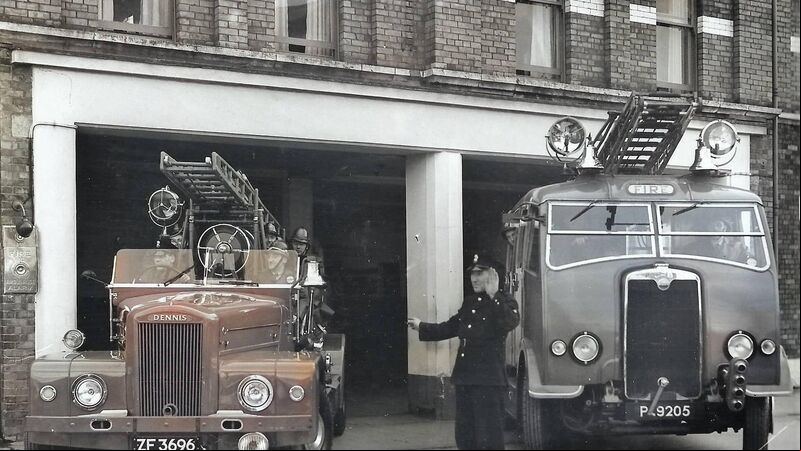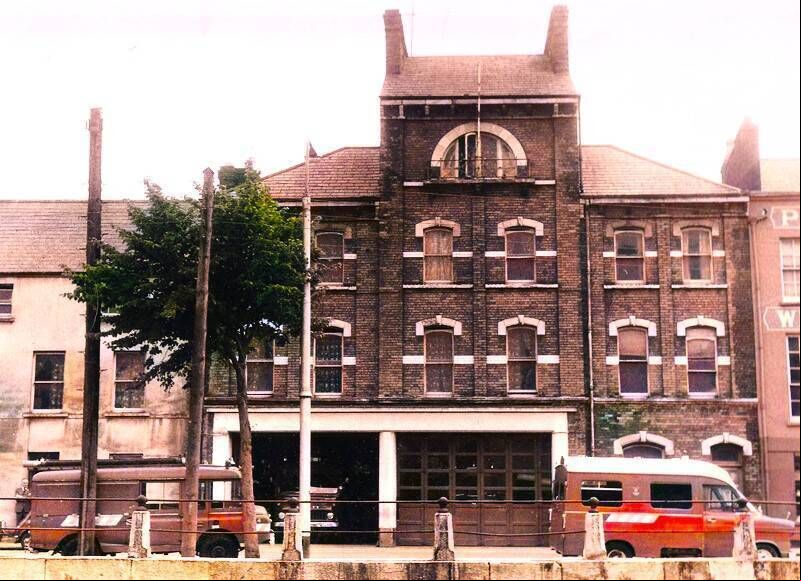Family life at Cork Fire Brigade’s live-in station on Sullivan’s Quay

Cork Fire Brigade appliances turn out from Sullivan’s Quay Fire Station in 1952.
For generations of Cork schoolboys, it was a godsend. The fire station, situated mere yards away from the Christian Brothers’ Schools on Sullivan’s Quay, ensured that the raucous clanging of its fire engines’ bells as they turned out to an emergency call, saved many an exasperated scholar as he struggled with the complexities of Latin first declension.

This shows an open yard surrounded by high walls and accessed by a gate with what appears to be limestone pillars.
On the site of the existing ‘station’ on Sullivan’s Quay. As far back as 1853, the City Council had taken a lease on the ground, comprising an area of some 61m by 46m from the Warren Estate with a view to eventually erecting a new city hall there;
At 20 South Mall, on the site of the former municipal offices;
Next to the City Hall, facing onto Albert Quay. In fact, an ment had appeared in The Cork Examiner on May 20, 1890, inviting proposals for the erection of a new City Hall and adjacent fire station.

From the early 1900s, annual leave of one week was granted.

Among its recommendations was the provision of a new central fire station to replace Sullivan’s Quay which had long outlived its usefulness.










